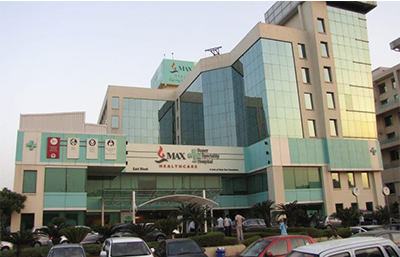Kyphoplasty

Our backbone is made up of vertebrae, or small sets of bones situated one top of another. Due to mainly the thinning of bones, the front part of the vertebrae can suffer small breaks in their structure, also known as compression fractures. These cracks can alter the usual structure of the spine, and give rise to pain and a hunched-over posture. The surgical treatment to correct this flaw in the spine is known as Kyphoplasty.
Reason for the procedure
The main reason for performing a Kyphoplasty is to treat the weakened bones and to return the fractured structure to a painless and corrected state. The reasons because of which your orthopedic surgeon may suggest a Kyphoplasty can be listed as;
- Strengthening of the bones::This is the general cause of the weakening of the vertebrae, especially of the spine. This defect is usually found in the senior people and mostly in women. The main reason forit is the loss of calcium from the bones, quite normal in the old age. For correcting the deteriorating bones and relieve the pressure, Kyphoplasty surgery may be suggested by your doctor.
- Correct the problems of Inflammation: Growth of tumors in the bones can distort the structures of the vertebra and thereby need the surgery technique of Kyphoplasty to correct the compression fractures.
- Nullifying the effect of microbial flora: There are several microorganisms which can attack and infect the bones’ internal constituents. This may cause the weakening of the bones and therefore need the appropriate correction surgery.
Causes
The causes that necessitate a Kyphoplasty surgery are typically the same that cause compression injury in the vertebral column in the first place. The reasons that may entail the surgeon to opt for this surgical intermediation can be stated as
- Osteoporosis: This is a condition where the vertebras of the spines are weakened, mainly due to the leaching of calcium or due to old age. Due to the absence of this important constituent of the vertebra, the bones in the spine exert pressure over one another which can be the cause of the small fractures.
- Tumors: Tumors are the mass of tissue or cellular aggregation which can be of two types; benign or metastatic. The metastatic tumors are the markers of cancer, and the presence of tumor in the osteoblasts will weaken the bones, giving rise to the need of performing a Kyphoplasty.
- Infection: It is the state of the presence of bacterial, viral, or other foreign organisms in the human body. In extreme cases, the infection can reach the bone marrow, which in turn can cause structural damage to the bones and thereby be the cause of suppression injuries, necessitating the application of a Kyphoplasty or related operations
Symptoms
The procedure of Kyphoplasty is fundamentally the surgicalimprovement of any physical issues occurring in the vertebral column due to compression injuries.However, some of the symptoms which may make your surgeon consider the Kyphoplasty procedure is;
- Experiencing difficulties in locomotion
- Problem to move the arms or legs
- Feelings of growing insensitivity
- Tingling in the limbs or end of the fingers
- Weakness in the arms or legs
- Pain in the back, head, or neck.
- Pressure and rigidity in the neck
- The affected person may notice a loss of height over an extended period.
Diagnosis
Structural anomalies of bones or any bony structure are primarily diagnosed by imaging techniques. After a preliminary test, the orthopedic surgeon may advise some more tests to ascertain about the condition. Some of the tests that the doctor responsible for the treatment of your vertebral column can prescribe are listed as;
- Xray: In this test, high-frequency radiation of wavelength lesser than visible light is projected on to the area of interest of the patient. The reflection is plated onto a special photographic film. This technique could be useful in the diagnosis of abnormalities in the structure of the spine, and in some cases, specialized X-rays are available to detect movement issues or spinal instability at the vertebral column.
- Magnetic resonance imaging(MRI): This technique utilizes the collection of large magnets, radiotherapy, and computer software to make a three-dimensional image of the internal organs or structures of the body. This technique is really useful in detecting small fractures in the bones.
- CT Scan: This is another imaging technique that usesX-rays and computer programs to prepare a detailed picture of the internal organs of the body. This method is more descriptive than a normal X-ray procedure and very useful in detecting anomalies in bones, muscles, organs, and adipose tissues.
- Nucelar Bone Scan: This method comprises of a radioactive material that is injected directly inside the body to measure the activity inside the bones. The amount of radiation is really small, and hence not dangerous to the body. This technique is a confirmatory diagnostic test of any damage in the vertebral column.
Risak Factors
- Infection
- Blood loss
- Amplified pain in the back.
- Stinging, unresponsiveness or weakness because of damage of nerves.
- Allergic reactions to chemicals used.
- Leakage of the specialized cement.
Post Operative Care
- You will be kept in a recovery room or be discharged, as per the understanding of the surgeon.
- You may feel soreness in the site of injection, for which painkiller could be given.
- The surgeon may restrict your activity for some time.
- Prescription for different vitamins, minerals, and drugs to strengthen your vertebra.
Treatment
After the presence of compression fractures are determined and the surgical method of Kyphoplasty is ascertained, the doctors will provide you with guidelines for the upcoming surgical procedure. The tips that the surgeon may give you before, during, and after the procedure can be listed as;
Before the treatment
The hospital staffs will take your pulse and your blood pressure a day before the tests. The doctor may go over your medical history, any ongoing drugs or medicine for other conditions, and any hypersensitivity towards the prescribed medicines. Several imaging techniques may be performed on your vertebra. Any jewelry, dentures, or other piercings and contact lenses have to be moved before the operation. According to the state of the patient, total or localized anesthesia may be applied.
During the procedure
- You will be placed in the operating table in a prone position.
- The area of the operation will be shaved if any hair is present and disinfected with an antiseptic.
- Depending upon the state of the patient, the anesthesiologist will apply a localized and general anesthesia. Normally, the general type is more preferred for this kind of procedure.
- The doctor shall insert a needle through the muscles and skin into the bone, often applying an X-ray guidance system.
- With the help of the needle, the surgeon will inflate a balloon that will help the bone to regain its normal structure.
- The needle will be removed completely. As this is a minimally invasive surgery, therefore no stitches are needed to close the entry point.
- Again with an X-ray guidance system, the surgeon will inject specialized cement into the bones.
- The needle will be removed completely. As this is a minimally invasive surgery, therefore no stitches are needed to close the entry point.
- The operation can be done within 1 hour if all goes right. Otherwise, if multiple vertebras need surgical attention, then it may take more time









